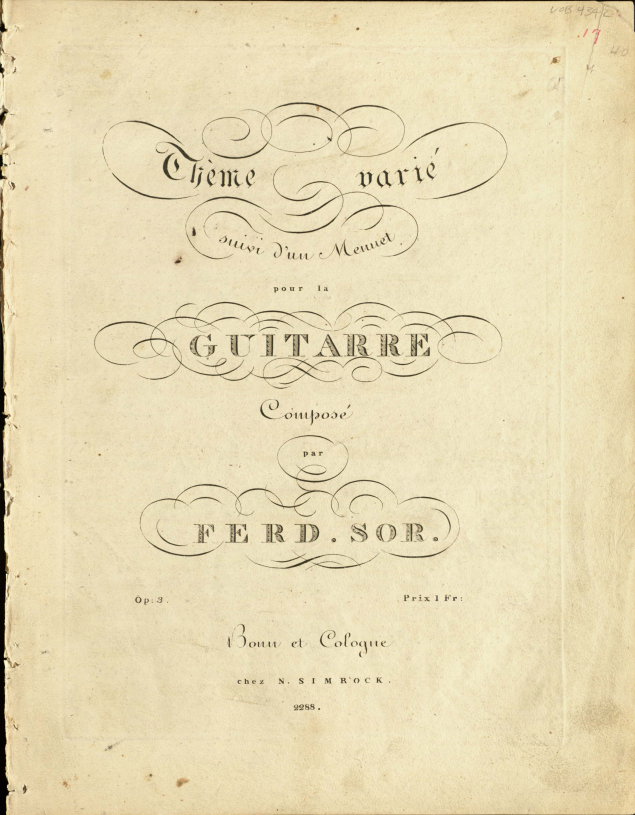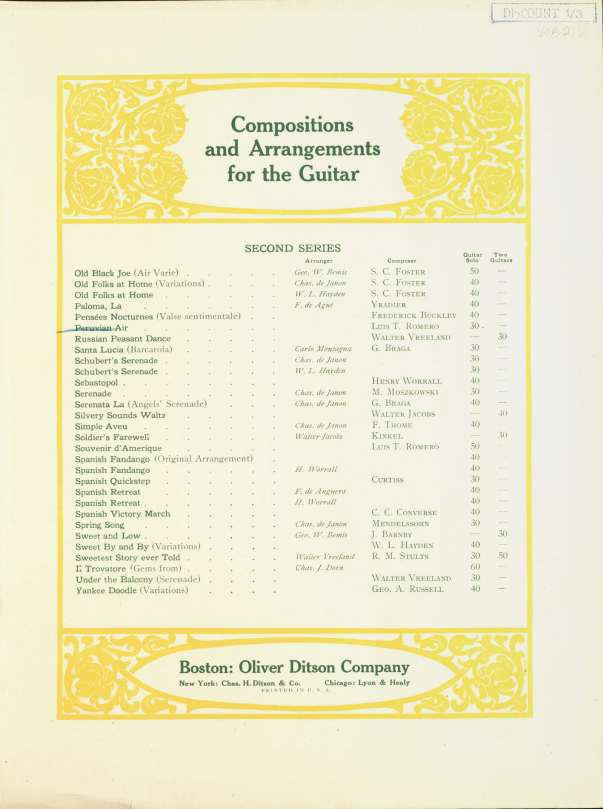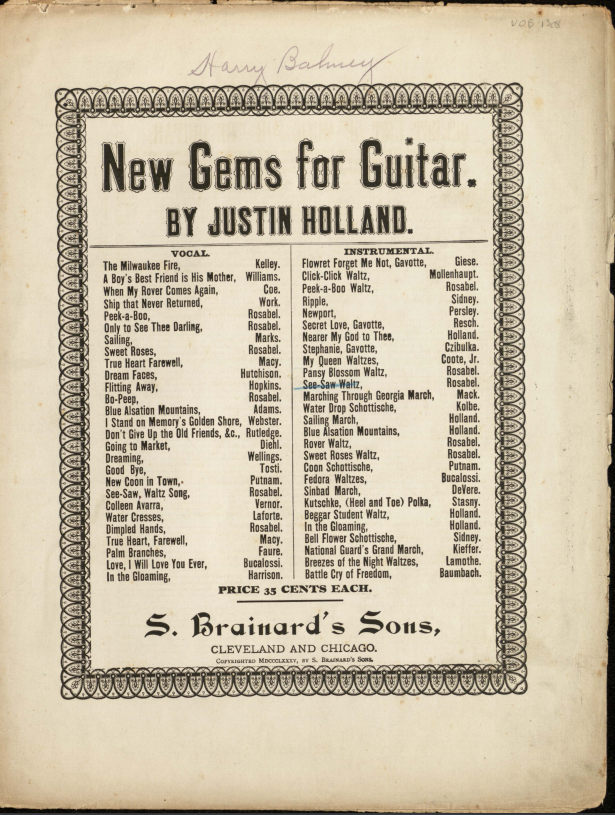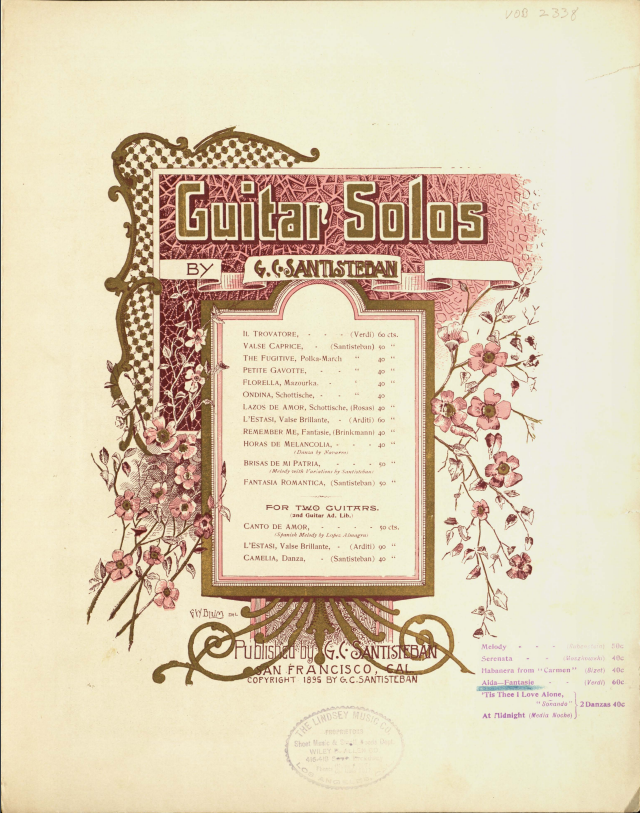
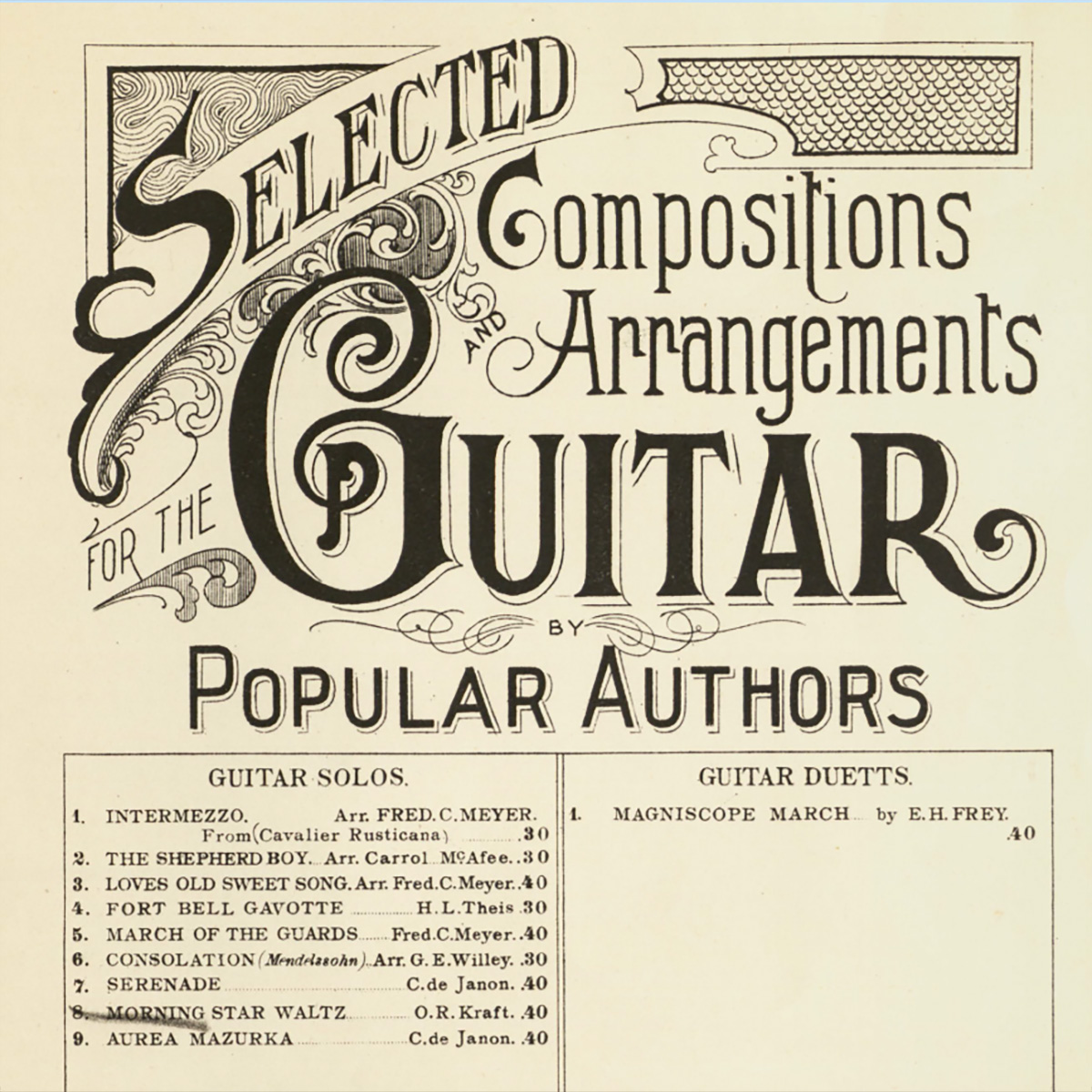
IGRA Guitar Scores Collection
Browse CollectionAbout
The International Guitar Research Archives scores database features over one thousand public domain works from composers and arrangers across the globe. In addition to the diverse array of guitar compositions and method books spanning centuries, the database contains works for other plucked strings such as banjo, mandolin and ukelele. Scores are presented in the PDF format. Text included in the scores is searchable where applicable. Vistors are encouraged to check back frequently as the database will continue to be augmented with news scores as they are made available. For a complete list of scores held by IGRA, please search the IGRA Score Catalog.
